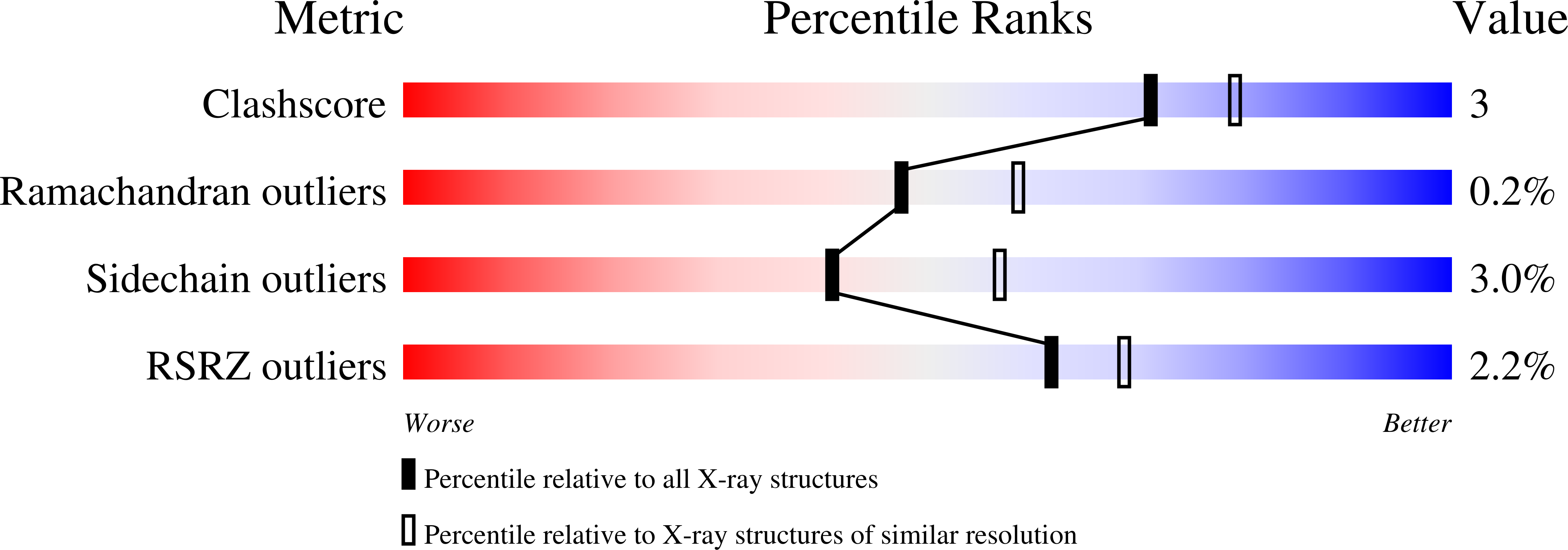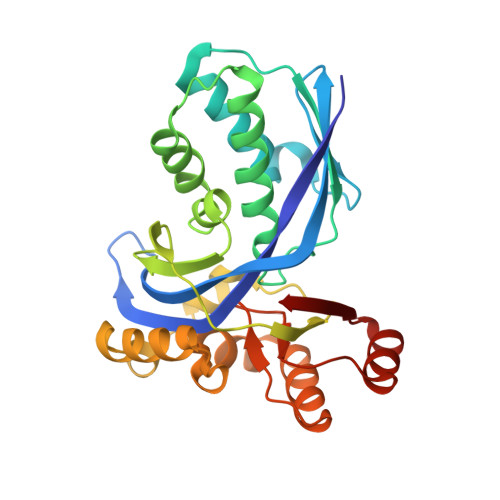Synthesis and Characterization of Cytidine Derivatives that Inhibit the Kinase Ispe of the Non-Mevalonate Pathway for Isoprenoid Biosynthesis.
Crane, C.M., Hirsch, A.K., Alphey, M.S., Sgraja, T., Lauw, S., Illarionova, V., Rohdich, F., Eisenreich, W., Hunter, W.N., Bacher, A., Diederich, F.(2008) ChemMedChem 3: 91
- PubMed: 18033714
- DOI: https://doi.org/10.1002/cmdc.200700208
- Primary Citation of Related Structures:
2V2Q, 2V2V - PubMed Abstract:
The enzymes of the non-mevalonate pathway for isoprenoid biosynthesis are attractive targets for the development of novel drugs against malaria and tuberculosis. This pathway is used exclusively by the corresponding pathogens, but not by humans. A series of water-soluble, cytidine-based inhibitors that were originally designed for the fourth enzyme in the pathway, IspD, were shown to inhibit the subsequent enzyme, the kinase IspE (from Escherichia coli). The binding mode of the inhibitors was verified by co-crystal structure analysis, using Aquifex aeolicus IspE. The crystal structures represent the first reported example of a co-crystal structure of IspE with a synthetic ligand and confirmed that ligand binding affinity originates mainly from the interactions of the nucleobase moiety in the cytidine binding pocket of the enzyme. In contrast, the appended benzimidazole moieties of the ligands adopt various orientations in the active site and establish only poor intermolecular contacts with the protein. Defined binding sites for sulfate ions and glycerol molecules, components in the crystallization buffer, near the well-conserved ATP-binding Gly-rich loop of IspE were observed. The crystal structures of A. aeolicus IspE nicely complement the one from E. coli IspE for use in structure-based design, namely by providing invaluable structural information for the design of inhibitors targeting IspE from Mycobacterium tuberculosis and Plasmodium falciparum. Similar to the enzymes from these pathogens, A. aeolicus IspE directs the OH group of a tyrosine residue into a pocket in the active site. In the E. coli enzyme, on the other hand, this pocket is lined by phenylalanine and has a more pronounced hydrophobic character.
Organizational Affiliation:
Laboratorium f¨¹r Organische Chemie, ETH Z¨¹rich, HCI, CH-8093 Z¨¹rich, Switzerland.


















